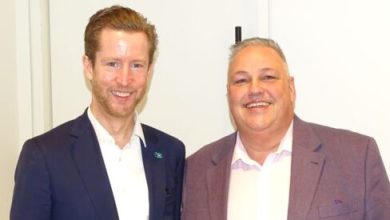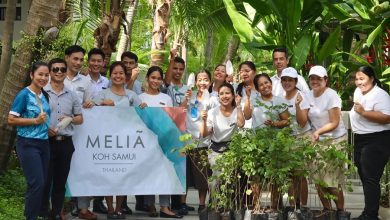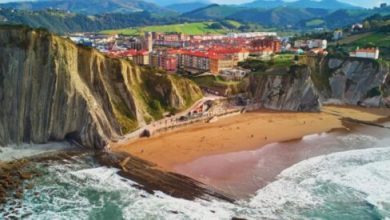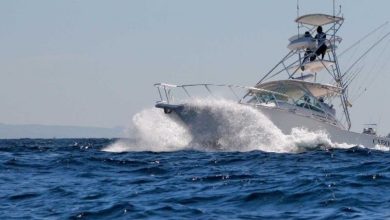ROLLIN’ DOWN THE RIVER OF THE AMERICAN DREAM: Cruising on the Colombia River
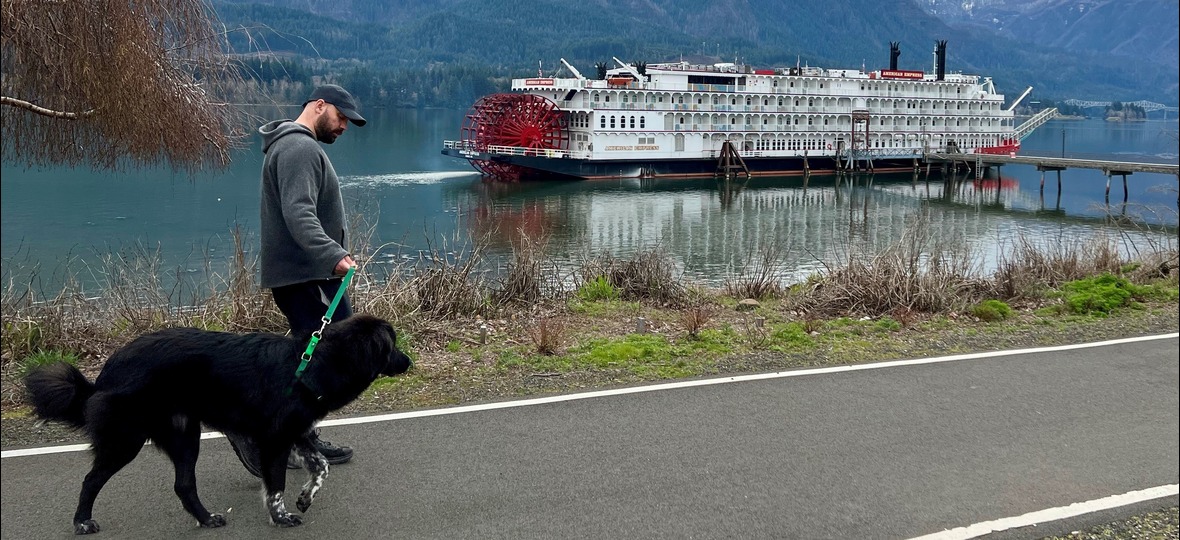
American Empress graces the Vancouver, Washington, waterfront, a gleaming white vision of early Americana, her red paddle wheel accented by the Stars and Stripes flaring high in the breeze, her jaunty prow poised to navigate the Columbia River.
Stepping up the gangplank among other passengers, I shared their stirring sense of pride for embarking on the iconic voyage with American Queen Voyages (AQV) that ultimately led to the settlement of the Pacific Northwest. We were destined to feel the river’s historic thrust through dramatic landscapes, diverse pockets of nature and local cultures that evolved over time.
Long before folksinger Woodie Guthrie uplifted national pride with “This land is your land, this land is my land,” steamboats and paddle wheelers plied the river. By the 1850s – mere decades after President Thomas Jefferson sent explorers Lewis and Clark on their treacherous 1804 expedition to find a route to the Pacific Ocean – these vessels risked the mighty Columbia’s rapids to transport cargos of gold ingots, lumber, salmon, wheat, and other agricultural products. Hauling cargo were adventurers seeking the American dream, good life, and prosperity
While settling in riverside communities, they spawned future generations as progress ensued, first with early railroads, then as engineers tamed the rapids with locks and canals. Decades later, the communities grew with labourers attracted by construction of the great Bonneville Dam that would spark electricity. When Woodie Guthrie witnessed men harnessing power from the waters that had challenged Lewis and Clark, he romanticized the river, singing “Roll on, Columbia roll on.” This became Washington’s patriotic State Song.
Anticipation for the Columbia River experience ran high as we gathered for the welcome reception in American Empress’ Paddlewheel Lounge. The clubby social hub, with its mahogany bar and library, has windows showcasing passing views as well as the ever-spinning paddlewheel at aft. Mingling, I realized the other passengers were well-travelled. As we shared impressions of that morning’s pre-embarkation tour of Portland, I was struck by their keen curiosity for experiencing authentic America. Everyone had enjoyed the main attractions: magnolias blooming at the exquisite Lan Su Chinese Garden that evokes gardens in Suzhou and Hangzhou, and the International Rose Garden. One woman – president of her New Orleans garden club – expressed delight at seeing rare rose species. Visiting this world-renowned garden had long been her dream.
Cruise director Marcus Harbaugh introduced people who would facilitate our voyage. Captain Andrea Mickelson, one of America’s few female riverboat captains, has notable expertise in reading the Columbia River’s challenging depths, widths, and currents. Michael Carroll, the Riverlorian or river historian, would lecture on the Lewis and Clark expedition, local Indigenous history, the cataclysmic geological events that shaped landscapes around the Columbia River Gorge, and how pioneers forged the Oregon Trail. Regina Charboneau, Culinary Ambassador for American Queen Voyages’ entire fleet, would lead local culinary tours and give cooking demonstrations. Also on board, were American Queen Voyages’ founder John Waggoner and his engaging wife, Claudette, Godmother of American Empress.
Over dinner in the Astoria Dining Room – its embossed ceiling dripping with dozens of crystal chandeliers – I sensed American Empress’ culinary style would focus on American soul food infused with creative zest. This first dinner set a standard for beautifully presented, delicious meals prepared with fresh local ingredients, all paired with choice regional wines. Available every night: lobster, salmon, steak, chicken, fish, vegetarian and vegan dishes. Among daily changing favourites: Yellowfin Tuna poke with avocado. Beef tenderloin with enoki mushrooms in red wine demi-glace. Halibut Alaska brushed with delicate cream sauce. Orange-glazed duck with cranberry chutney. Chocolate cheesecake with caramelized “turtle” glaze. Ice creams flavored with local cherries, huckleberries, or other fruits.
Passengers who prefer casual dining could choose the fourth floor River Grill for abundant buffet selections to eat indoors or out on the aft deck. This bright space with vast windows became a favourite nosh spot while passing by the scenic Columbia Gorge.

Historic Astoria, Oregon
America’s first settlement west of the Rockies, Astoria, Oregon greeted passengers with drizzly rain, mist clouding its scenic hills. Situated near the Columbia River’s mouth – its roaring waters smashing against Pacific waves – Astoria harbours myriad attractions for film and arts buffs, as well as thrill-seekers eager to zipline above Oregon’s lush rainforest, steep streets and Victorian-style houses, it’s easy to see why the city substitutes for San Francisco in films.
For history buffs, the “Lewis and Clark Experience” traces the final route of the expedition’s 43-band Corps of Discovery.
Briefly told: When Thomas Jefferson became President in 1801, the US extended to the Mississippi River. US gained lands west of that river with the 1803 Louisiana Purchase from France. When Meriwether Lewis and William Clark set out from St. Louis in 1804, they needed help communicating with Indians. They found the perfect guide to translate and forage for food in a 16-year-old Shoshone Indian mother named Sacagawea or Bird Woman. Accompanied by her Canadian fur-trapper husband, Toussaint Charbonneau, she facilitated the journey, bartering with Indians for horses when the rapids became too fierce, then guiding the Corps over perilous land before returning to the river. Along the way, she helped the explorers catalogue species of plants and document animals. Legends go that, at the river’s most turbulent point, Sacagawea rescued the Corps, allowing them to reach the ocean.
As in every port, passengers who shy away from group tours may explore at their own pace on the riverboat’s free, guided hop-on-hop-off bus, or using free bicycles. With Astoria’s steep streets and Victorian-style houses, it’s easy to see why it substitutes for San Francisco in films.
Lewis and Clark experience
Astoria’s top sites include Lewis and Clark National Historic Park, which rings the mouth of the Columbia River’s rugged coastline. Marked with trails that follow the explorers’ footsteps, this vast park area marks where they interacted with Chinook and Clatsop Indians who inhabited the land for thousands of years. Top stops include interpretive exhibits at Middle Village Station Camp, where the Corps camped in 1805; and a lofty lookout over Cape Disappointment, the farthest point westward where the two-year quest ended. Fort Clatsop Heritage Museum – a replica of the original fort – details history of the expedition, the fur trade and Native American culture. The towering Astoria Column – ringed with images depicting historic events – is worth climbing 164 steps for panoramic river views.
The Columbia River Maritime Museum brims with displays portraying everything from science of the Pacific Northwest’s longest river – flowing 2,000 km. from Columbia Lake in southeast British Columbia to the Pacific Ocean – to details of the fishing industry and Coast Guard. Seeing a poster of early cannery workers, one passenger said she chose this cruise to see Astoria, because her ancestors emigrated here from Shanghai in 1897 to work in the fisheries. At one time, Astoria had the largest Chinatown outside San Francisco. Outside the museum, just beyond where American Empress was berthed, tall wood posts extend from the river, marking the footings that once supported the many canneries that lured workers from Asia and Scandinavia.
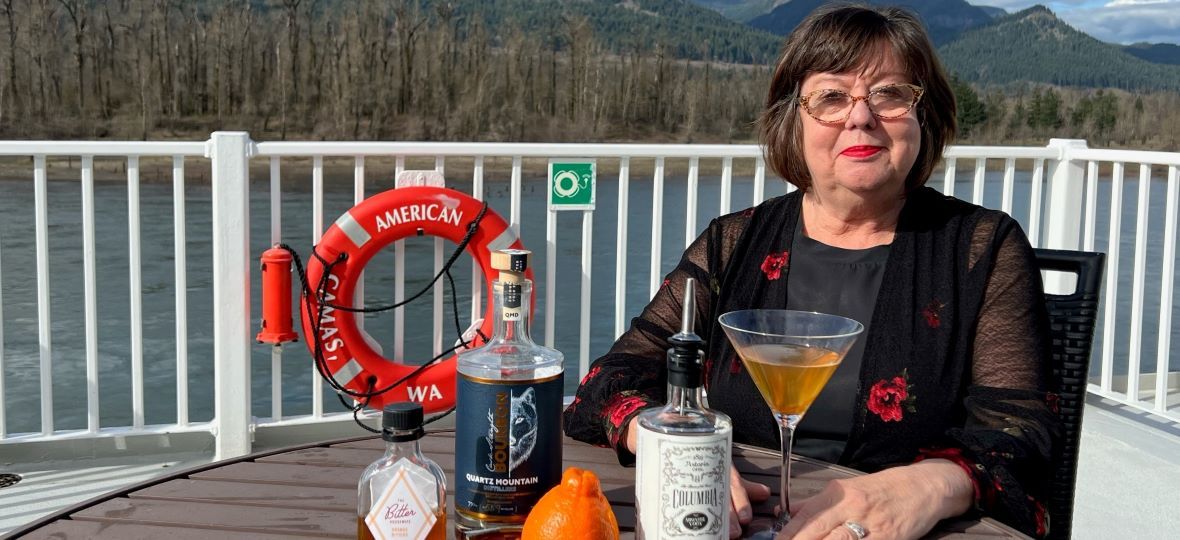
Astoria’s local flavours came to life on a tasting tour with Regina Charboneau. Top spots included Pat’s Pantry, where owners Dennis Thomas and daughter Savannah garnered a country-wide following for Oregon’s organic spices, teas, cooking oils and nuts. Here, Charboneau bought a bottle of Bitter Housewife Orange Bitters. At Pilot House Distillery, she chose heady Columbia Absinthe. Both – along with Quartz Mountain Bourbon – would be used for her lesson on crafting the South’s signature Sazerac cocktail. At Fort George Brewery we sampled varieties of craft beers.
Plying the Columbia River Gorge
Early next morning, sunrise beaming over the river set a glowing tone for leisurely cruising as American Empress entered the first of four Bonneville Locks to transit the Columbia River Gorge. Activities this day included Riverlorian’s lecture on the history of local Indigenous people and details of the 9,000-year-old “Kennewick Man” remains found nearby. We learned lands surrounding the Columbia River are now home to 14 distinct Indigenous tribes. They have become major economic forces, operating sawmills, power plants, dams, resort hotels, and co-managing wildlife and fisheries with riverside states.
By late afternoon we were deep in the heart of the Columbia River Gorge when American Empress docked at Stevenson, Washington. Active passengers ventured out to jog or cycle along the riverfront or explore the local eateries and craft breweries.
Early next morning, we set out to explore the Columbia River Gorge wearing rain jackets and sturdy shoes. Spanning over 130 km., the Gorge started forming some 17 million years ago, and evolved during the last ice age when floods cut the steep walls that exist today. The Gorge’s wide range of precipitation and elevation – from sea level to 1,220 m. – creates an extremely diverse and dynamic ecosystem. After the tour bus crossed the Bridge of the Gods to Cascade Locks, Oregon, we spotted the tourist hut where hikers join the famed Pacific Trail that runs south to Mexico and north to Canada. As we followed the Old Scenic Highway, passing rainforests and dozens of waterfalls glistening like silver ribbons against black basalt cliffs, passengers were spellbound, snapping photos along the way. Steep hairpin turns lead to two panoramic lookouts over the Columbia River Gorge, Chanticleer Point and Crown Point at Vista House.
Excitement mounted at the first sight of Multnomah Falls. Oregon’s highest waterfall plunges 190 m. through lush rainforest. The thrill of reaching the narrow bridge suspended over the falls lured me and a friend to follow the steep, slick trail through towering, moss-covered trees. On the bridge, we ignored the wet spray, lingering amid the rush of beauty to inhale the rainforest’s verdant fragrance.
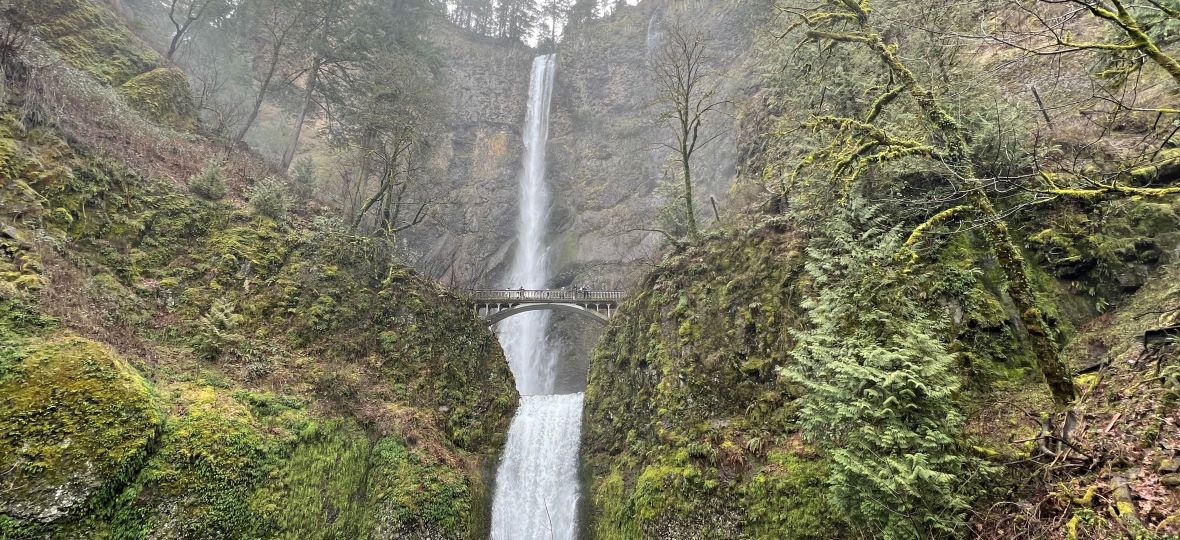
Transitioning landscapes
As American Empress departed Stevenson, she left behind the last patch of rainforest stretching from the Pacific coast, where annual rainfall totals 2,500 mm. Rolling toward The Dalles, Oregon, the landscape transitioned dramatically, first to emerald hills, then to arid desert and barren basalt rock. Riverlorian explained the emerald hue of grass, rare even after early spring rain, would quickly fade as the hills become parched with 300 days of sunshine.
The Art of The Dalles
The next morning, bright orange sunrise over The Dalles Dam cast an auspicious aura for a day of surprises as the “Art of The Dalles” tour exceeded expectations for art aficionados and oenophiles alike. As our tour bus followed the river and crossed the bridge to Washington, I was awestruck by two structures, each perched on a lofty plateau, incredibly in the middle of nowhere. These are the concrete whims of eccentric railroad and utilities magnate Samuel Hill who, incidentally, engineered construction of the Columbia Gorge Highway.
Dreaming of enticing the railroad this way, Hill had commissioned the Stonehenge Memorial to honour locals who perished in WWI. Fashioned after England’s mystic monument, today it draws curious believers from around the world. Grandeur aside, it was obvious why his Maryhill residence proved too isolated for his wife and family. Today, this classic edifice with its contemporary addition is the renowned Maryhill Museum of Art, a cultural icon of Washington State that draws hundreds of thousands of visitors annually. Its remote location sets an exquisite sense of place for outdoor sculptures overlooking this calm stretch of the Columbia River, its banks fringed with bucolic vineyards and grazing cattle. Its quiet interior cultivates an exclusive ambience for art one would never expect to find – as some say – at this neck of the river. Notably, the Auguste Rodin gallery showcases more than 80 of the artist’s works. Other exhibits include heritage treasures of regional Indigenous people.
Craving to quench our thirst on this sunny day, we stopped at Jacob Williams Winery, known for its cache from Columbia Gorge and Columbia Valley vineyards. While sipping flights of Pinot Noir, Merlot and Cabernets Franc and Sauvignon Blanc, I chatted with AQV founder John Waggoner The friendly marine biologist/ entrepreneur who dreamed of having a riverboat after venturing on a riverboat casino, said: “I hope passengers encounter the depths of what our nation has to offer, its history, music, food and local culture.” Looking around at cheery passengers, his hope seemed to have reached reality.
Exploring The Dalles the next day, the hop-on-off-bus guide explained this biggest city in the Columbia Gorge area, with 17,000 people, lured 1950s settlers to work in the dam, construction, and aluminum industries. Since Google built its data centre in 2006, providing free Internet to every resident, the city attracts people in business, industry, science, agriculture, and the arts. While its claims to fame are cherries – notably for Ben & Jerry’s ice cream – and wheat, which is shipped raw to Japan and returned to the US as noodles, and the Columbia Gorge Discovery Center & Museum, I was impressed by the locals representing The Dalles’ burgeoning culture.
Among them is David Benko, who purchased a languishing, three-story building from the city for one dollar and renovated it to house the National Neon Sign Museum. His collection of vintage treasures includes the world’s first neon-gas tube invented by Georges Claude.
While strolling through town – and browsing through Oregon’s oldest bookstore – I sensed a common thread of spirited resilience and optimism. Inspired by a pretty window to enter The Yarn Shop, I found owner Heather Bostic arranging reams of yarn and knitting supplies. Asked what inspired her to locate here at the edge of town, she said: “As a lifelong Portlander, we often chased the sun to our vacation home here in The Dalles. Now, my family wants an easier, brighter life. The Dalles is a charming choice with Tudor and Victorian homes. It’s an adorable place filled with small town pride. Here, with internet, my yarns can sell around the world.”
Romancing the American Dream
By the time we reached Lewis and Clark’s campsite at Sacagawea Park, in Richland, Washington, American Empress had taken me through locks that tamed the expedition’s turbulent waters, and by landscapes that transitioned dramatically from rainforest to green hills to sheer cliffs to rocky basalt to parched desert. Ultimately the river voyage had made me fall in love with the Pacific Northwest, appreciate its allure for explorers past and settlers present, and left me thinking America has so much more to discover.
FAST FACTS
• American Empress Columbia and Snake River voyages run March to November.
• AQV’s signature all-inclusive treatment includes one night at a pre-cruise hotel, ground transfers between hotel and vessel, unlimited included guided tours, free hop-on-hop-off coaches, unlimited beverages, open bars and lounges, unlimited WiFi, free use of bicycles and walking sticks, acclaimed cuisine, all-day in-room dining, live entertainment, and enrichment.
• The paddlewheel riverboat welcomes passengers primed for ease, its four floors accessible by stairs and two elevators. The hallways are lined with rare collections of prints, paintings and artifacts, each floor depicting the lore of steamboats, Indigenous Americans or explorations stretching to Alaska. Rooms have Victorian style with mahogany desk and cabinets, and fabric valances over the windows. The compact bathroom has a shower stall. Amenities include a personal Keurig coffee maker and fridge.
• Acquired by American Queen Voyages (AQV) in 2013, American Empress originally entered service in 2003 as Majestic America Line’s Empress of the North. After extensive renovations, the 223-passenger vessel began plying this route in 2014. AQV’s steamboat and small ships also cruise the Mississippi, Ohio, Tennessee, and Cumberland rivers, as well as US coasts. Launched in May, 2021, AQV’s new Ocean Victory is built with utmost, innovative environmental standards to cruise Alaskan waters, including a bow that is submerged below the waterline to reduce motion at sea.
• For details visit: www.aqvoyages.com
First published at Travel Industry Today

